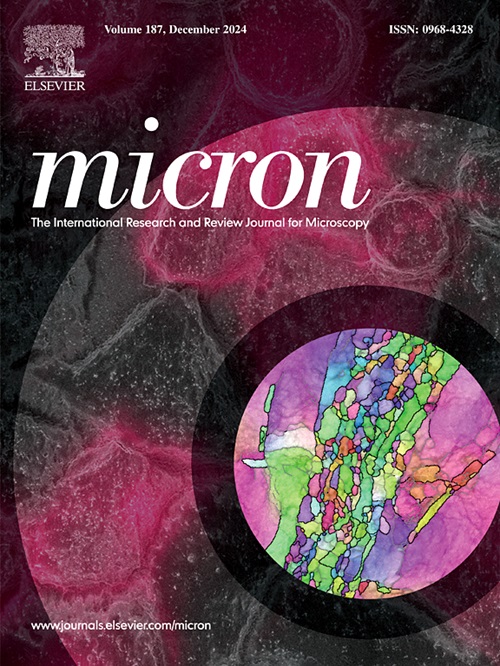针对组蛋白乙酰转移酶的植物源化合物可抑制克氏锥虫的增殖和存活,并影响寄生虫的超微结构。
IF 2.5
3区 工程技术
Q1 MICROSCOPY
引用次数: 0
摘要
南美锥虫病的病原体--克氏锥虫的染色质结构和组织与其他真核生物相似,也会发生某些表观遗传修饰,如组蛋白乙酰化和去乙酰化。组蛋白乙酰转移酶抑制剂经常被用作治疗肿瘤细胞的药物,但它们对原生动物的影响尚未得到充分探讨。本研究调查了姜黄素、曲妥内酯和无患子酸这三种乙酰转移酶抑制剂对克柔子的影响。姜黄素能够抑制表原体和非表原体的增殖,是最有效的化合物。雷公藤内酯也能抑制克鲁兹绦虫的增殖,并与姜黄素一起促进核异染色质的解包和核仁的紊乱。Anacardic acid 不会改变寄生虫的生长或存活率,但会引起超微结构变化,如线粒体肿胀和嵴扩大。这些化合物都不会影响微管细胞骨架。这些研究结果表明,组蛋白乙酰转移酶抑制剂,尤其是姜黄素,有可能应用于针对克鲁斯绦虫的化疗研究中。我们的研究结果加强了开发可成功用于治疗被忽视疾病的新化合物的必要性。本文章由计算机程序翻译,如有差异,请以英文原文为准。
Plant-derived compounds that target histone acetyltransferases inhibit Trypanosoma cruzi proliferation and viability and affect parasite ultrastructure
Trypanosoma cruzi, the causative agent of Chagas disease, exhibits a chromatin structure and organization similar to that of other eukaryotes, undergoing certain epigenetic modifications, such as histone acetylation and deacetylation. Histone acetyltransferase inhibitors have been frequently applied as therapy agents against tumor cells, but their effects on protozoa have not yet been adequately explored. In this study, the effects of three acetyltransferase inhibitors, curcumin, triptolide and anacardic acid, were investigated on T. cruzi. Curcumin was able to inhibit epimastigote and amastigote proliferation and was the most effective compound. Triptolide also impaired T. cruzi proliferation and, along with curcumin, promoted the unpacking of nuclear heterochromatin and nucleolus disorganization. Anacardic acid did not alter parasite growth or viability, but caused ultrastructural changes, such as mitochondrial swelling and cristae enlargement. None of these compounds affected the microtubule cytoskeleton. These findings indicate that histone acetyltransferase inhibitors, especially curcumin, display the potential to be applied in chemotherapeutic studies against T. cruzi. Our results reinforce the necessity of developing new compounds that can be used successfully in therapy against neglected diseases.
求助全文
通过发布文献求助,成功后即可免费获取论文全文。
去求助
来源期刊

Micron
工程技术-显微镜技术
CiteScore
4.30
自引率
4.20%
发文量
100
审稿时长
31 days
期刊介绍:
Micron is an interdisciplinary forum for all work that involves new applications of microscopy or where advanced microscopy plays a central role. The journal will publish on the design, methods, application, practice or theory of microscopy and microanalysis, including reports on optical, electron-beam, X-ray microtomography, and scanning-probe systems. It also aims at the regular publication of review papers, short communications, as well as thematic issues on contemporary developments in microscopy and microanalysis. The journal embraces original research in which microscopy has contributed significantly to knowledge in biology, life science, nanoscience and nanotechnology, materials science and engineering.
 求助内容:
求助内容: 应助结果提醒方式:
应助结果提醒方式:


